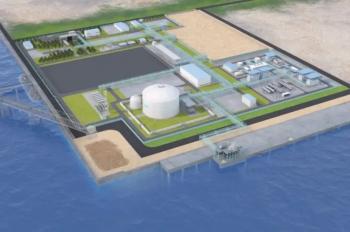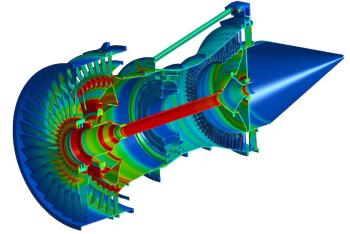
The Evolving Power Plant
Panel of experts at PowerGen 2023 review efforts to decarbonize the power generation sector
In this extensive session, key service solution providers, including the original equipment manufacturers (OEMs), discussed the most cutting-edge technologies available for new and existing dispatchable power plants. This report covers the most turbomachinery-centric topics. In addition, speakers on this panel also highlighted the anticipated impacts of newly implemented climate legislation in the United States. Represented are the views of Siemens Energy, Mitsubishi Power Americas, Power Systems Mfg., and GE Gas Power.
One of the key takeaways was that plants must be “future-proofed” by offering decarbonized firming capacity for growing intermittent renewable penetration that is also reliable and affordable. This includes operational and clean-fuel flexibility from hydrogen and ammonia, as well as carbon capture, all coupled with digital-intelligent data platforms.
Jeff Goldmeer, Emergent Technology Director – Decarbonization at GE Gas Power, has worked with hydrogen since 2007. More generally, his work is involved with the development of alternative fuels. Recently, a number of successful demonstrations have proven hydrogen’s capability. One example Goldmeer offered was the collaboration between IHI and Ge Gas Power for a 100% ammonia research memorandum of understanding (MOU). He stressed that gas turbines have proven to be one of the most reliable sources of power generating capacity available—there is no question about that. While he doesn’t believe they will be going away, he thinks that as time goes on, renewables will begin to show their capability. He stated, “The world needs access to dependable gas-turbine energy assets; it’s critical for the future."
Pratyush Nag, Program Director for the 9000HL Class Gas Turbine Product & Business Development at Siemens Energy, spoke on trends in the energy industry. Twenty years ago, a huge boom in demand for energy was predicted. As a result, OEMs ramped up production to meet the anticipating surge of sales for power generation assets. Five to six years ago, the question of bringing renewables into the mix entered the conversation. Today, it’s all about residual load. The energy grid needs to address how to manage shortfalls in reliability. Intermittency is a key stop on the path toward decarbonization. The 9000HL series gas turbine from Siemens Energy seeks to address this problem. It offers a large ramping capability of 100 MW/minute. It takes just five minutes for the turbine to bring 400 MW of power to the grid. Bringing power quickly to the grid solves the issue of residual load. It also can run up to 50% hydrogen.
Note to readers: A more detailed breakdown of the topics covered will be featured in a later article.
Newsletter
Power your knowledge with the latest in turbine technology, engineering advances, and energy solutions—subscribe to Turbomachinery International today.





